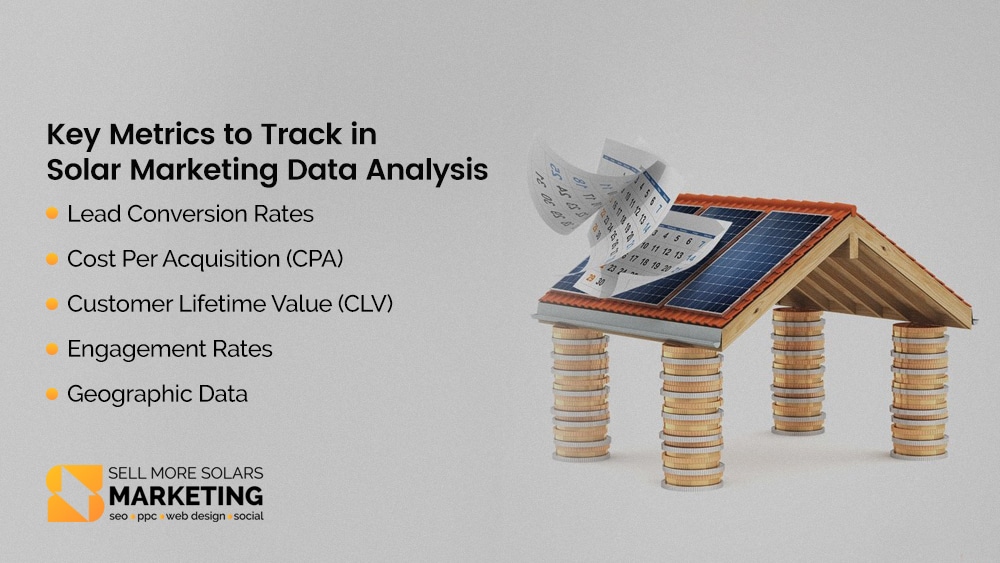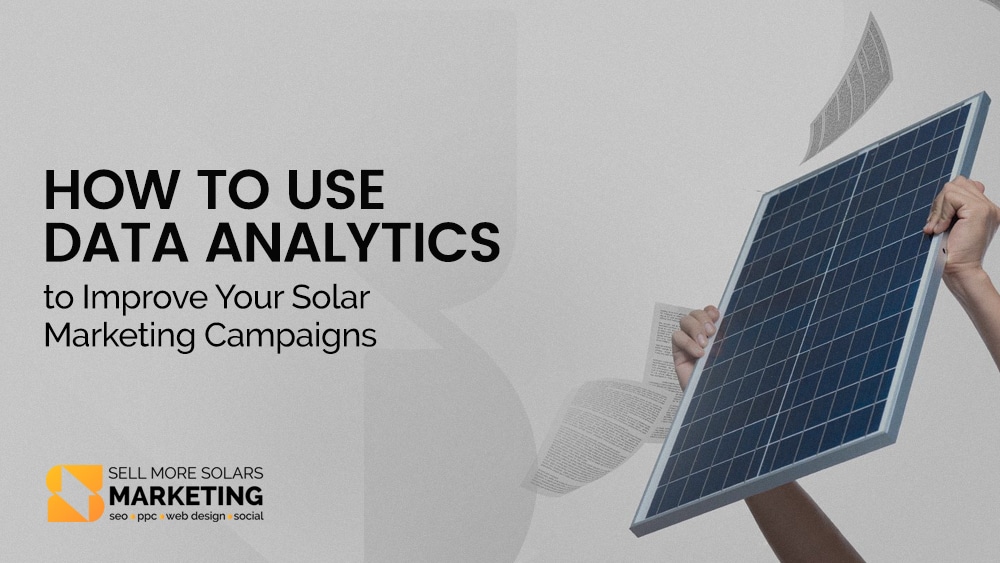The solar industry has seen exponential growth in recent years, driven by a global push toward renewable energy and sustainability. However, with increased competition, solar businesses must leverage every tool at their disposal to stay ahead. One of the most powerful tools is data analytics for solar marketing campaigns. By analyzing data effectively, you can identify trends, refine strategies, and improve your return on investment (ROI).
n this blog, we will explore the ways marketing data analysis can be utilized to optimize solar marketing campaigns. We’ll discuss key metrics, strategies for data collection, and actionable insights that can transform your marketing efforts.
Why Data Analytics is Important for Solar Marketing
Data analytics is the process of examining raw data to draw meaningful insights that aid decision-making. In the context of solar marketing, this means using data to understand customer behaviors, market trends, and the effectiveness of your campaigns.
Understanding Your Audience:
Data analytics for solar helps marketers segment diverse customer groups, from eco-conscious homeowners to corporate sustainability-focused clients. This segmentation, powered by marketing data analysis, ensures custom campaigns that resonate with specific needs, maximizing relevance and engagement to drive conversions.
Optimizing Marketing Spend:
With large marketing budgets in the solar industry, data analytics for solar enables businesses to identify the most effective channels. By leveraging marketing data analysis, companies can allocate resources to high-ROI strategies, ensuring marketing investments yield maximum impact and cost efficiency.
Tracking Market Trends:
Solar technology and incentives evolve rapidly, and staying ahead of these changes is crucial. Data analytics for solar provides real-time market insights, helping businesses monitor industry trends, adjust strategies, and remain competitive by adapting quickly to new opportunities and challenges.
Improving Customer Retention:
By analyzing customer feedback and purchase patterns through marketing data analysis, solar companies can enhance their post-sale services. Data-driven insights allow for improved customer experiences, leading to better satisfaction, higher retention rates, and the potential for repeat business or referrals.
1
Key Metrics to Track in Solar Marketing Data Analysis

To optimize your solar marketing campaigns, it is essential to track key metrics that directly impact performance. Lead conversion rates are crucial as they reveal how many leads are turning into customers, helping refine targeting strategies.
The cost per acquisition (CPA) is another important metric, measuring the cost of acquiring a customer, with the goal of lowering CPA to enhance marketing efficiency. Customer lifetime value (CLV) is particularly relevant in the solar industry, where the customer relationship extends beyond installation, providing insight into the long-term profitability of each customer.
Engagement rates, including email open rates and click-through rates (CTR) on ads, help evaluate the effectiveness of your messaging and campaigns. Lastly, geographic data is vital, as solar adoption rates vary by region, allowing for more efficient allocation of resources based on where potential customers are located.
Steps to Implement Data Analytics for Solar Marketing Campaigns
1. Establish Clear Goals
Before diving into analytics, define what you want to achieve. Are you looking to generate more leads? Reduce ad spend? Increase installations? Your goals will guide your data collection and analysis.
2. Collect Data from Multiple Sources
Solar businesses often use various platforms for marketing, such as social media, email, and paid ads. Consolidating this data into a single dashboard can provide a comprehensive view of your campaigns.
Tools to Consider:
• Google Analytics: For website traffic and behavior.
• CRM Software: For customer data.
• Social Media Insights: To track engagement and reach.
3. Analyze Customer Behavior
Use analytics tools to understand how potential customers interact with your marketing materials. For instance:
• Are they spending time on your “Benefits of Solar” page?
• Are they abandoning the contact form halfway through?
These insights can help refine your content and improve the user experience.
4. Use Predictive Analytics
Predictive analytics uses historical data to forecast future trends. For example:
• Identifying which geographic areas are likely to see increased solar adoption.
• Predicting which demographics are most likely to respond to specific campaigns.
This allows you to proactively target high-potential customers.
5. Optimize Campaigns in Real-Time
Data analytics enables you to monitor campaigns in real-time and make adjustments. If an ad isn’t performing, you can tweak the messaging, targeting, or budget allocation on the fly.
6. A/B Testing
Experiment with different versions of ads or emails to see which resonates best with your audience. Use data to back your decisions, ensuring you’re not relying on guesswork.
Actionable Insights from Marketing Data Analysis
Here are specific ways to turn insights into action for your solar marketing campaigns:
Segment Your Audience by Behavior
Not all customers are at the same stage in their solar journey. Use data to segment your audience into:
• Awareness Stage: Educate them about the benefits of solar.
• Consideration Stage: Provide detailed information like cost savings.
• Decision Stage: Offer personalized quotes or promotions.
Identify High-Performing Channels
Through marketing data analysis, you might discover that Facebook ads generate more leads, while LinkedIn drives corporate inquiries. Allocate your resources accordingly to maximize ROI.
Enhance Your SEO Strategy
Analyze search data to identify the keywords your target audience is using. For example, “solar panel installation near me” or “best solar companies in California.” Optimize your website and content around these terms.
Personalize Marketing Messages
Data analytics allows for hyper-personalization. For instance, if a user frequently visits pages about solar incentives, your follow-up emails can focus on tax credits and rebates.
Monitor Competitor Performance
Keep an eye on your competitors’ campaigns. By analyzing their performance (e.g., via social media trends or ad placements), you can identify gaps in your strategy and refine your approach.
Challenges in Solar Marketing Data Analysis and How to Overcome Them
1. Data Overload:
In today’s digital age, solar businesses generate vast amounts of data from various sources, including website traffic, social media platforms, customer inquiries, and sales metrics. This sheer volume can quickly become overwhelming, leading to confusion about which data points truly matter. To overcome this, prioritize metrics that directly align with your business objectives.
For example, focus on lead generation, conversion rates, or customer acquisition costs rather than unrelated or superficial metrics. Employ data visualization tools to highlight trends and insights, making the data easier to interpret and actionable.
2. Data Accuracy:
Inaccurate or incomplete data can be detrimental, leading to misguided strategies and wasted resources. For instance, if customer contact details or project timelines are wrong, it can impact your ability to follow up or close deals effectively.
The solution lies in using reliable data collection tools that minimize errors and inconsistencies. Regularly audit and clean your datasets to remove duplicates, fill missing values, and correct errors. Implement validation checks during data entry to ensure accuracy from the start.
3. Integration Issues:
Solar businesses often rely on various platforms for different purposes, such as marketing automation, customer relationship management (CRM), and project management. However, these systems frequently don’t integrate seamlessly, resulting in siloed data that’s hard to consolidate and analyze.
Investing in integration tools like Zapier or adopting a centralized CRM system can help unify data from all platforms. This streamlines your data collection process, enhances visibility, and ensures that your team has a holistic view of customer interactions and campaign performance.
4. Lack of Expertise:
Analyzing marketing data requires specific skills, including the ability to interpret complex data sets and derive actionable insights. Many solar companies may not have the in-house expertise to handle this effectively, leading to missed opportunities or inefficient strategies.
To address this challenge, consider hiring skilled data analysts or partnering with an agency that specializes in solar marketing and data analytics. Outsourcing to experts allows you to focus on your core operations while benefiting from professional insights and tailored recommendations to optimize your marketing efforts.
The Future of Data Analytics in Solar Marketing
As the solar industry grows, so will the role of data analytics. Emerging technologies like artificial intelligence (AI) and machine learning will make marketing data analysis even more powerful. Imagine AI algorithms predicting the next big solar market or crafting personalized ads based on individual customer preferences. Businesses that integrate data-driven decision-making today will not only survive but thrive in this competitive landscape.
Conclusion
Data analytics is a game-changer for solar marketing campaigns. By using insights from data analytics for solar, businesses can refine their strategies, improve customer engagement, and maximize ROI.
Whether you’re a solar startup or an established player, integrating marketing data analysis into your campaigns is essential. The solar revolution is here to make sure your marketing strategies are powered by the insights only data can provide.










